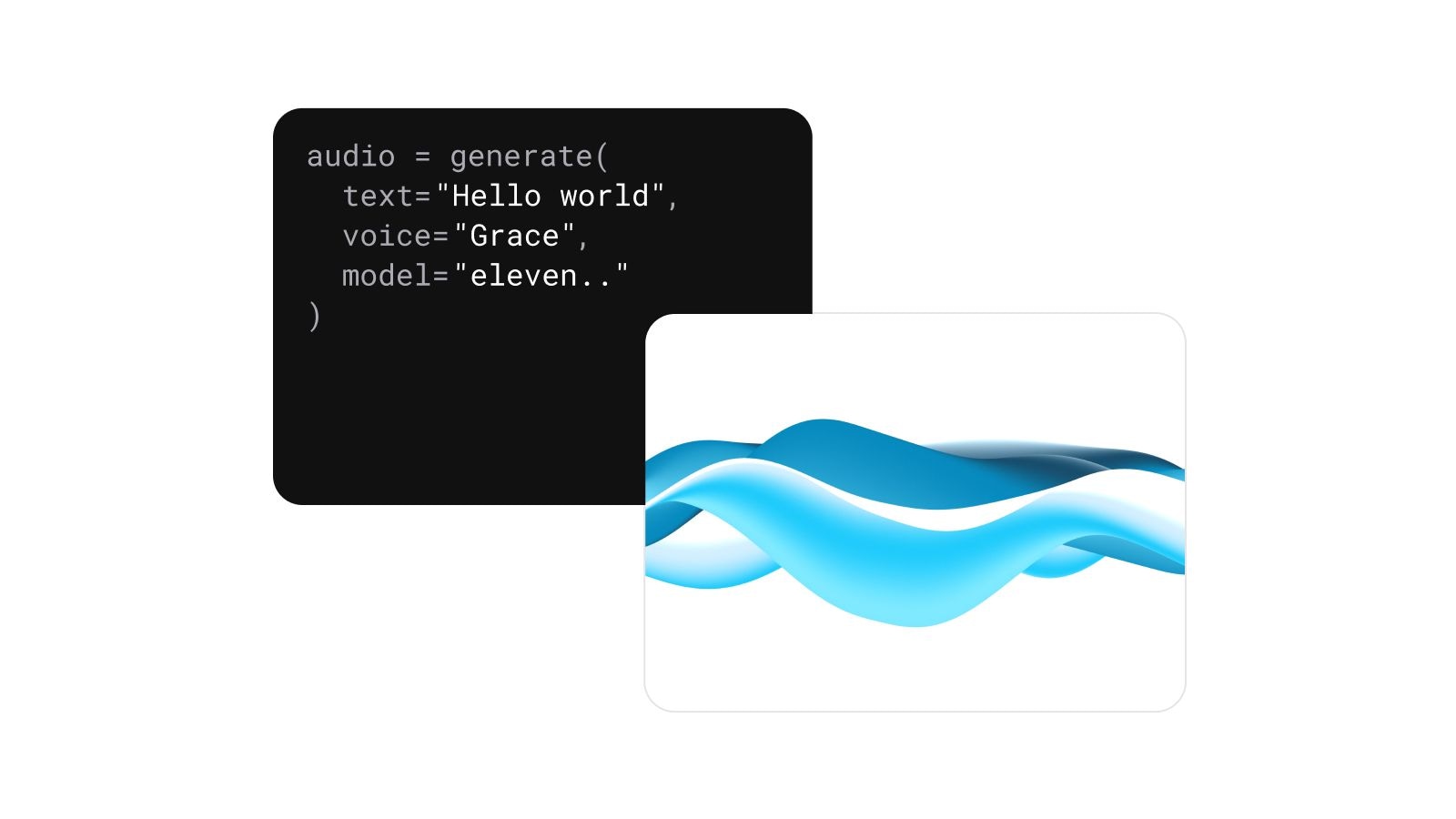
Z łatwością zintegruj nasz interfejs API do zamiany tekstu na mowę o niskim opóźnieniu i zapewnij swoim aplikacjom wyraźne, wysokiej jakości głosy przy minimalnym nakładzie pracy związanym z kodowaniem
Ożywiaj wirtualne doświadczenia dzięki przekonującej narracji zamiany tekstu na mowę.
Ciche wirtualne doświadczenie może wydawać się niekompletne. Bez narracji wirtualna wycieczka po muzeum traci kontekst, internetowy przewodnik turystyczny wydaje się bezosobowy, a edukacyjna symulacja VR nie przyciąga uwagi. Dodanie głosu do tych doświadczeń dodaje warstwę realizmu, sprawiając, że treść wydaje się żywa i angażująca. Technologia Text to Speech (TTS) odgrywa kluczową rolę w tej transformacji, oferując naturalnie brzmiącą, personalizowaną narrację.
W opowiadaniu historii styl narracji jest równie ważny jak same słowa.
Odpowiedni głos może dodać głębi, tempa i osobowości, czyniąc doświadczenie bardziej wciągającym i zapadającym w pamięć. Głos dodaje tonu, tempa i akcentu, przekształcając pasywne wirtualne doświadczenie w interaktywną podróż. Dlatego wycieczki z przewodnikiem po muzeach mają ludzkich narratorów, a gry wideo polegają na aktorstwie głosowym, aby wciągnąć graczy w swoje światy.
W wirtualnej i rozszerzonej rzeczywistości głos może łączyć świat cyfrowy z użytkownikiem.
Dobrze umieszczona narracja może dostarczyć kontekstu historycznego, oferować wskazówki nawigacyjne lub uczynić doświadczenie bardziej angażującym. Zamiast wymagać od użytkowników czytania akapitów, Text to Speech pozwala im słuchać i pozostawać zanurzonym w środowisku bez znudzenia. Wypróbuj Eleven v3, nasz najbardziej ekspresyjny model Text to Speech.
TTS to także ekonomiczne i szybkie rozwiązanie dla firm i twórców treści. Dzięki mowie generowanej przez AI narrację można tworzyć na żądanie, łatwo edytować i dostosowywać do różnych języków przy minimalnym wysiłku.

Jak wspomnieliśmy powyżej, zaawansowane narzędzia Text to Speech są doskonałym dodatkiem do wirtualnych wycieczek i immersyjnych doświadczeń.
Przyjrzyjmy się korzyściom bardziej szczegółowo:
Głos może kształtować, jak postrzegamy historię. Płaska, robotyczna narracja może stępić nawet najbardziej ekscytującą treść, podczas gdy ekspresyjna mowa przyciąga słuchaczy. Platformy TTS zasilane AI oferują teraz syntezę mowy, która replikuje ludzką mowę poprzez głos, tempo i emocje.
Wyobraź sobie cyfrową wycieczkę po galerii sztuki z entuzjastycznym wirtualnym narratorem, który ożywia obrazy, lub edukacyjną symulację naukową z bardziej tajemniczym tonem, aby utrzymać ciekawość i ekscytację.
Choć subtelne, te elementy utrzymują użytkowników zaangażowanych i zanurzonych.
Nie wszyscy odbierają treści cyfrowe w ten sam sposób.
TTS jest niezbędnym narzędziem dostępności dla osób niedowidzących lub mających trudności z czytaniem. Mówiona narracja zapewnia, że każdy może angażować się w wirtualne środowiska, czyniąc treści bardziej inkluzywnymi.
Dostępność wykracza także poza konkretne niepełnosprawności. TTS przynosi korzyści użytkownikom, którzy wolą audio od tekstu. Wiele osób lepiej przyswaja informacje, gdy je słyszy, a nie czyta. Dzięki wprowadzeniu narracji wirtualne doświadczenia stają się bardziej intuicyjne i przyjazne dla użytkownika.
Wiele wirtualnych wycieczek jest skierowanych do międzynarodowej publiczności. Zamiast tworzyć osobne nagrania dla każdego języka, TTS umożliwia wsparcie wielojęzyczne w czasie rzeczywistym.
Użytkownicy mogą przełączać się między językami jednym kliknięciem, co pozwala im doświadczyć środowiska w ich rodzimym języku.
Na przykład wirtualna wycieczka po Luwrze może natychmiast dostarczać opisy w języku francuskim, angielskim, hiszpańskim i mandaryńskim. Tego typu adaptacja językowa przełamuje bariery i zapewnia, że każdy czuje się włączony.
Produkcja wysokiej jakości nałożonych głosów może być kosztowna, zwłaszcza w przypadku dużych projektów wirtualnych. TTS eliminuje potrzebę drogich sesji nagraniowych i profesjonalnych aktorów głosowych, pozwalając firmom skalować swoje doświadczenia w ramach budżetu.
Ponadto aktualizacje i modyfikacje są również łatwiejsze. Jeśli wirtualne muzeum dodaje nową wystawę, nowa narracja może być wygenerowana natychmiast, unikając czasu i kosztów związanych z zatrudnieniem aktora głosowego do drobnych zmian.
Dodanie TTS do wirtualnego środowiska jest łatwiejsze niż kiedykolwiek dzięki dostępności narzędzi mowy zasilanych AI i przyjaznych dla deweloperów API. Oto jak zacząć.
Wybór odpowiedniego głosu ma kluczowe znaczenie dla stworzenia immersyjnego wirtualnego doświadczenia. Dokument historyczny może potrzebować głębokiego, autorytatywnego tonu, podczas gdy dziecięca przygoda VR skorzysta z ciepłego, energetycznego narratora.
Zaawansowane platformy Text to Speech, takie jak ElevenLabs, oferują narzędzia do wyboru i personalizacji głosu, które pozwalają twórcom eksperymentować z różnymi stylami przed podjęciem decyzji o najlepszym dopasowaniu.
Większość nowoczesnych rozwiązań TTS, w tym ElevenLabs, oferuje łatwe w użyciu API Text to Speech, które można zintegrować z cyfrowymi doświadczeniami. Proces zazwyczaj obejmuje:

Z łatwością zintegruj nasz interfejs API do zamiany tekstu na mowę o niskim opóźnieniu i zapewnij swoim aplikacjom wyraźne, wysokiej jakości głosy przy minimalnym nakładzie pracy związanym z kodowaniem
Speech Synthesis Markup Language (SSML) to potężne narzędzie do precyzyjnego dostrajania wyjścia TTS. Pozwala deweloperom dodawać pauzy, podkreślać słowa i kontrolować wymowę, sprawiając, że narracja brzmi bardziej naturalnie.
SSML jest szczególnie przydatny w doświadczeniach wymagających dramatycznego opowiadania historii lub precyzyjnej artykulacji.
Testowanie jest niezbędne, aby zapewnić najlepsze doświadczenie. Słuchanie mowy generowanej przez TTS w wirtualnym środowisku pomaga zidentyfikować obszary, w których tempo, wymowa lub akcent mogą wymagać dostosowania. Zbieranie opinii od użytkowników może również wskazać sposoby dalszego udoskonalania narracji.
Dodanie głosu do wirtualnego doświadczenia pomaga użytkownikom poczuć się bardziej związanymi i zaangażowanymi. Dobrze skonstruowana narracja może przyciągnąć widzów i utrzymać ich zaangażowanie podczas wirtualnej wycieczki, przygody z opowiadaniem historii lub interaktywnego modelu nauki.
Technologia Text to Speech ułatwia wprowadzenie wysokiej jakości nałożonych głosów bez krwi, potu i łez związanych z niekończącymi się sesjami nagraniowymi. A to dopiero początek. W miarę jak synteza mowy zasilana AI staje się coraz bardziej naturalna i ekspresyjna, przyszłość wirtualnych doświadczeń będzie bardziej angażująca, dostępna i adaptacyjna niż kiedykolwiek wcześniej.
Śledź nas, aby być na bieżąco z ekscytującymi nowościami!

Introducing a set of updates that expand what creators and developers can build with Eleven Music.

Increasing physician reach by 30% and cutting admin time by 10 hrs/week
Napędzane przez ElevenLabs Agenci